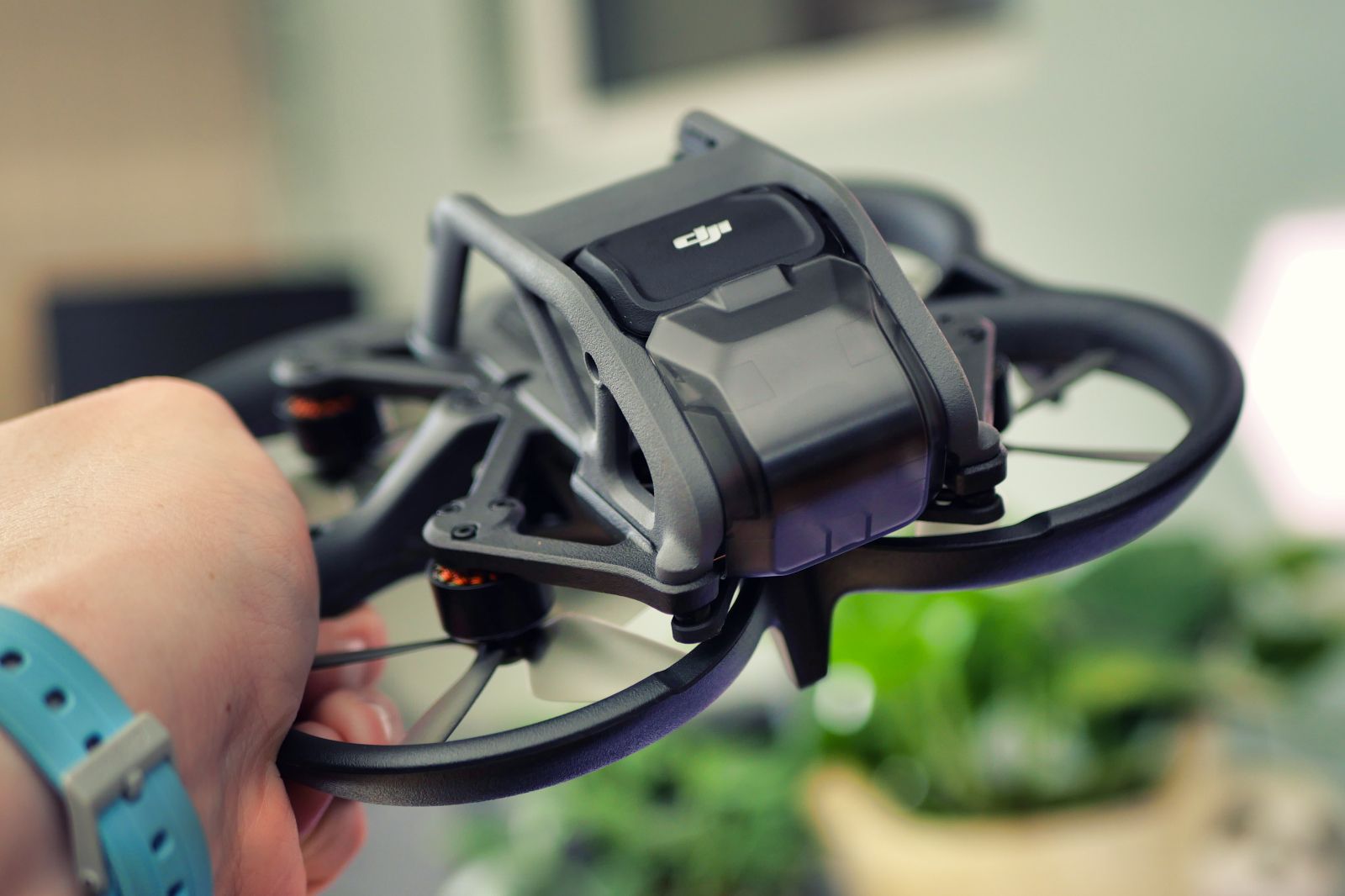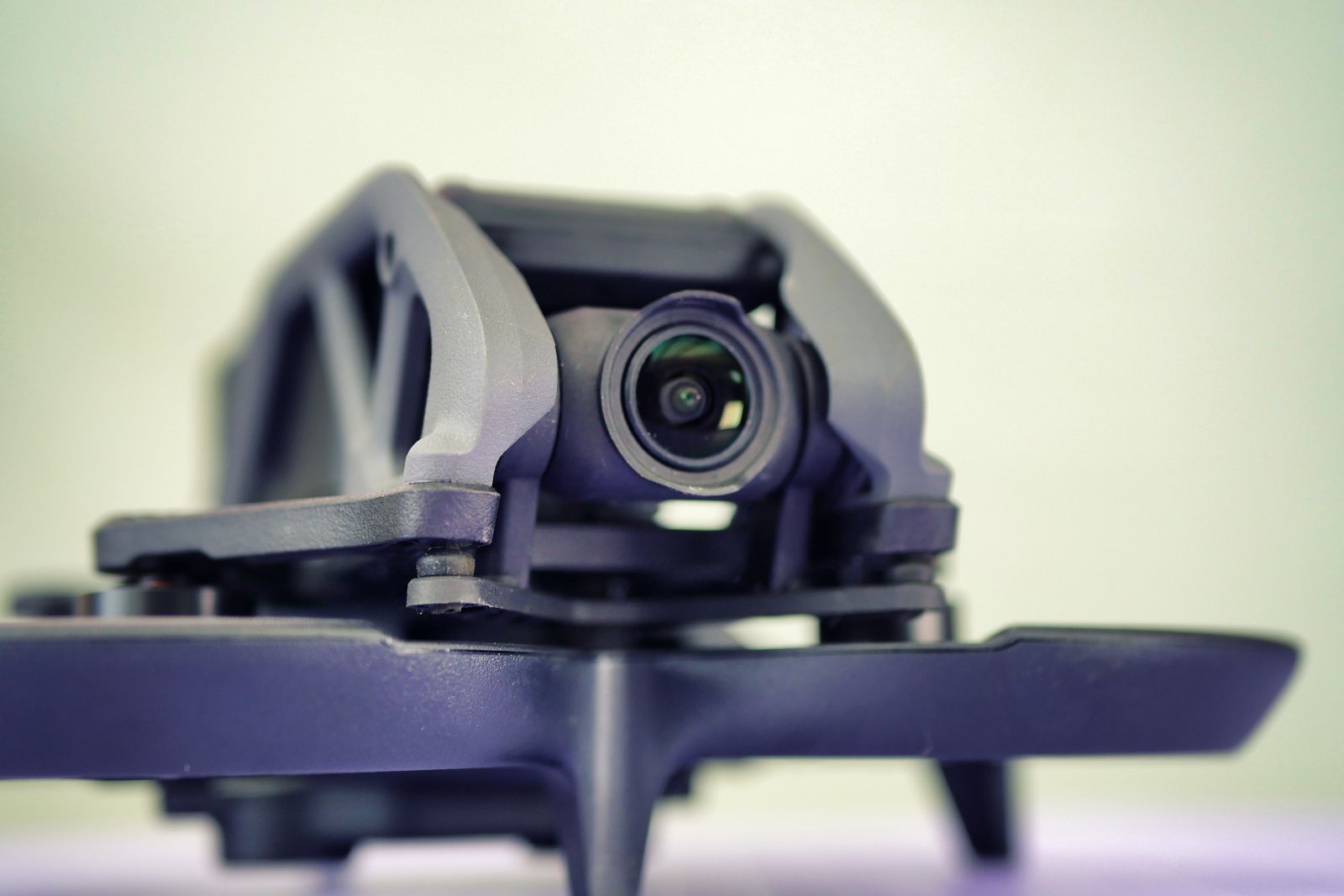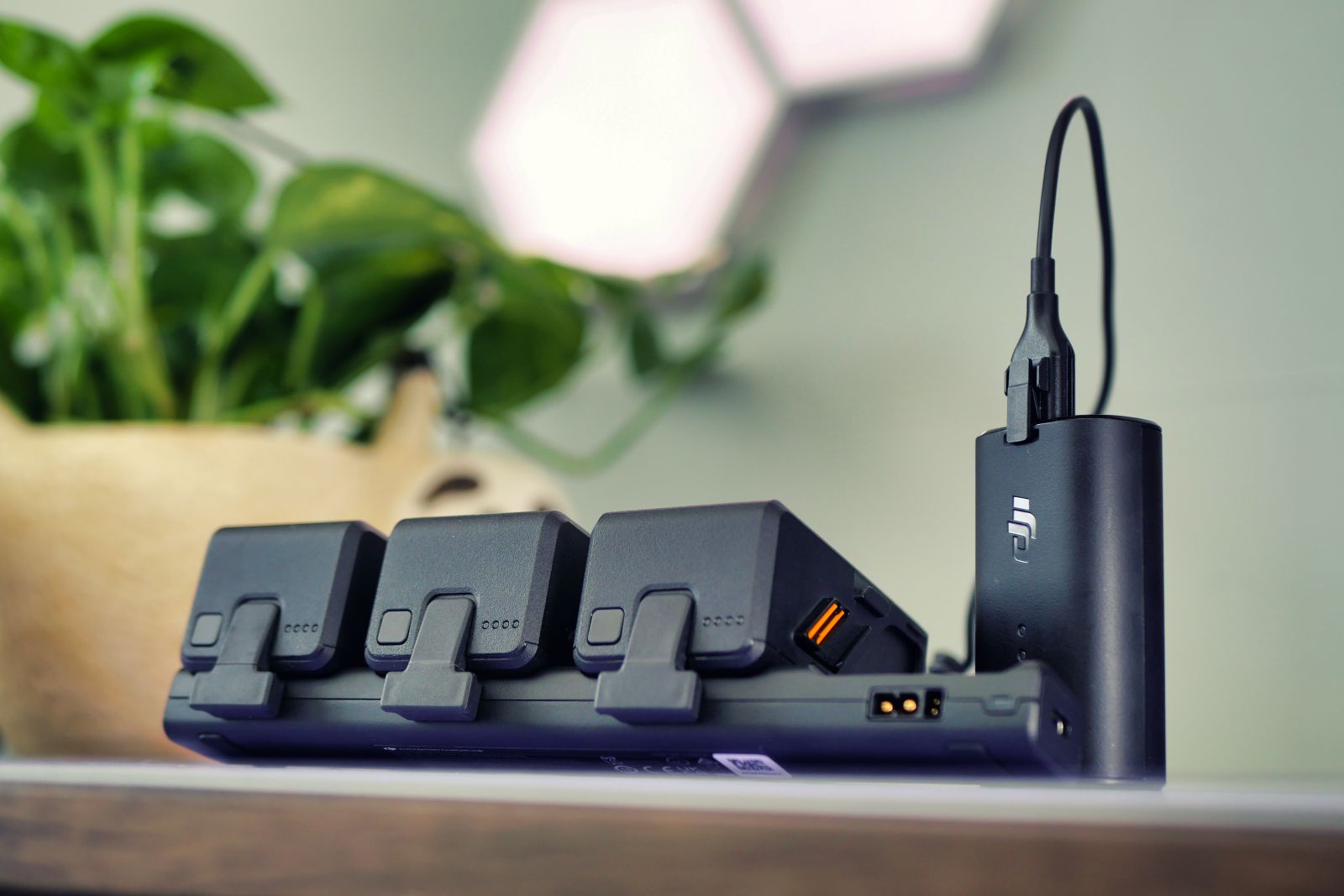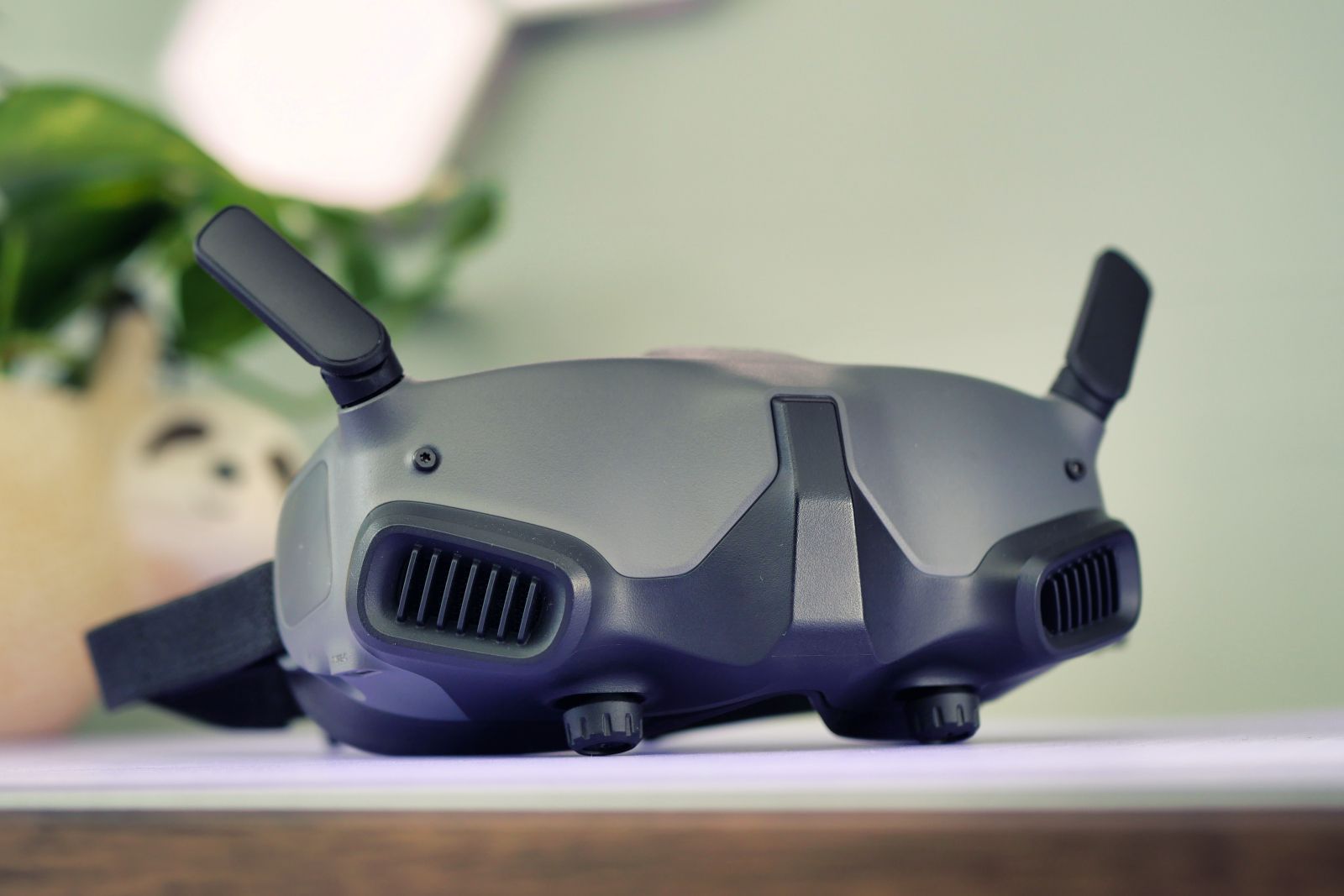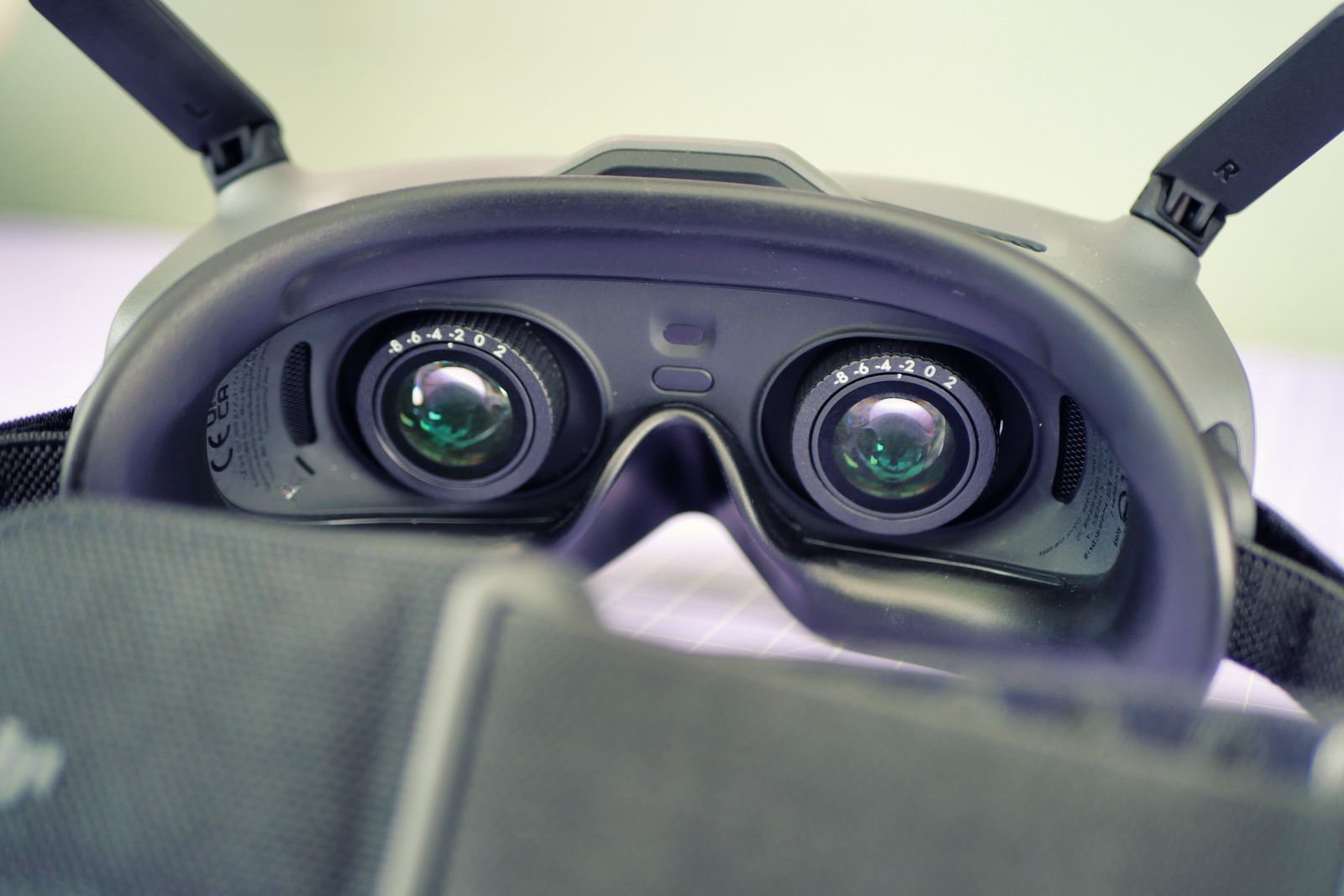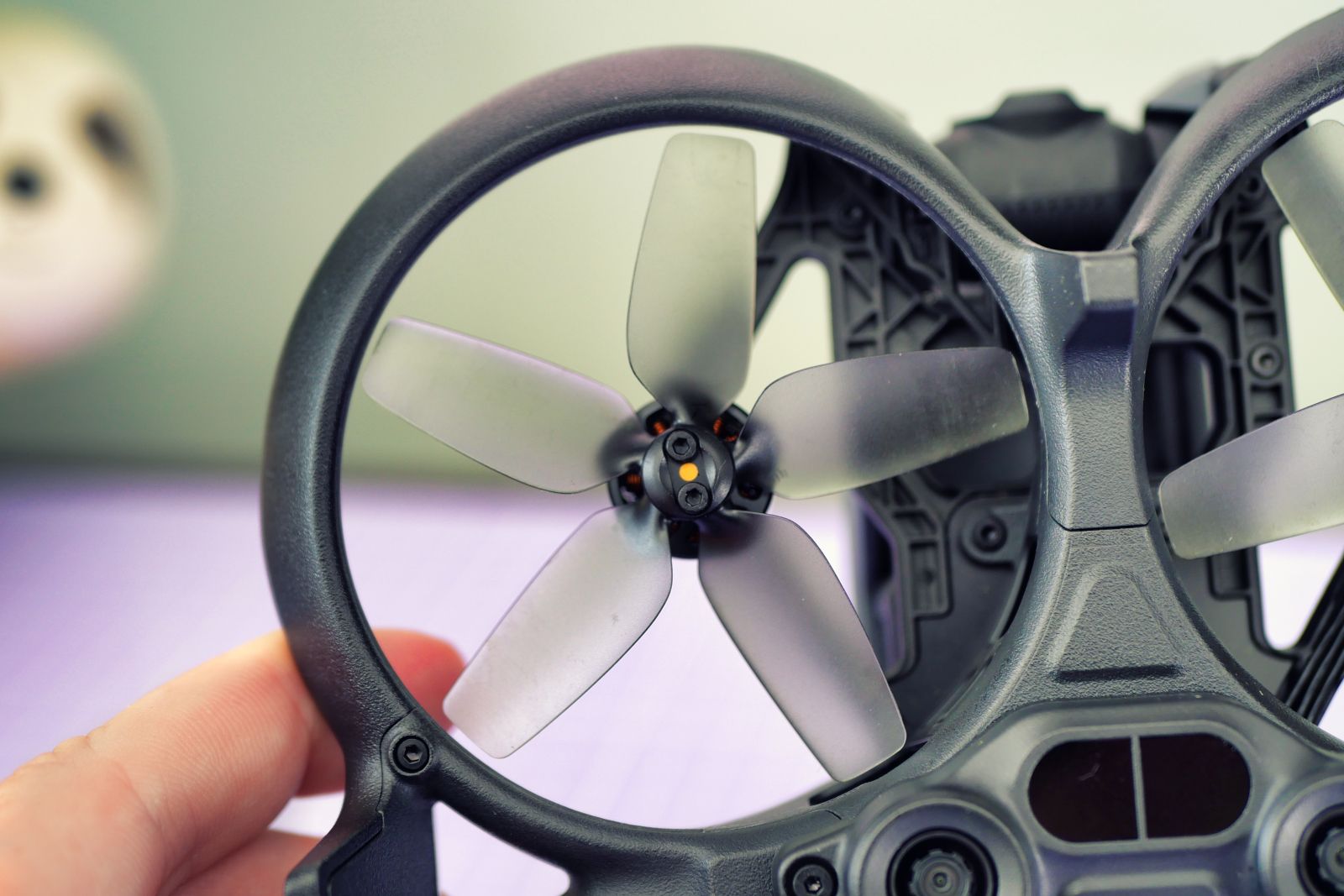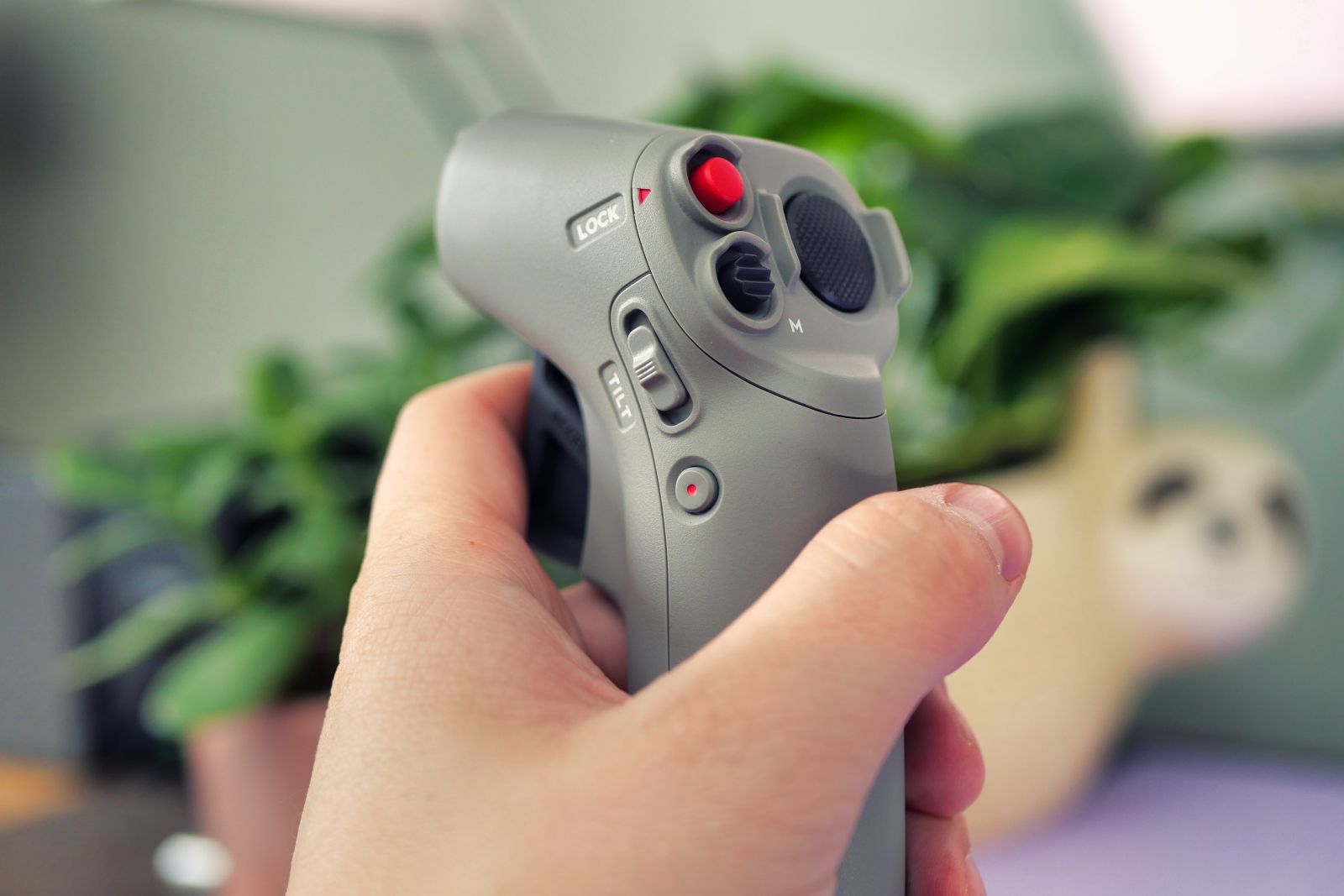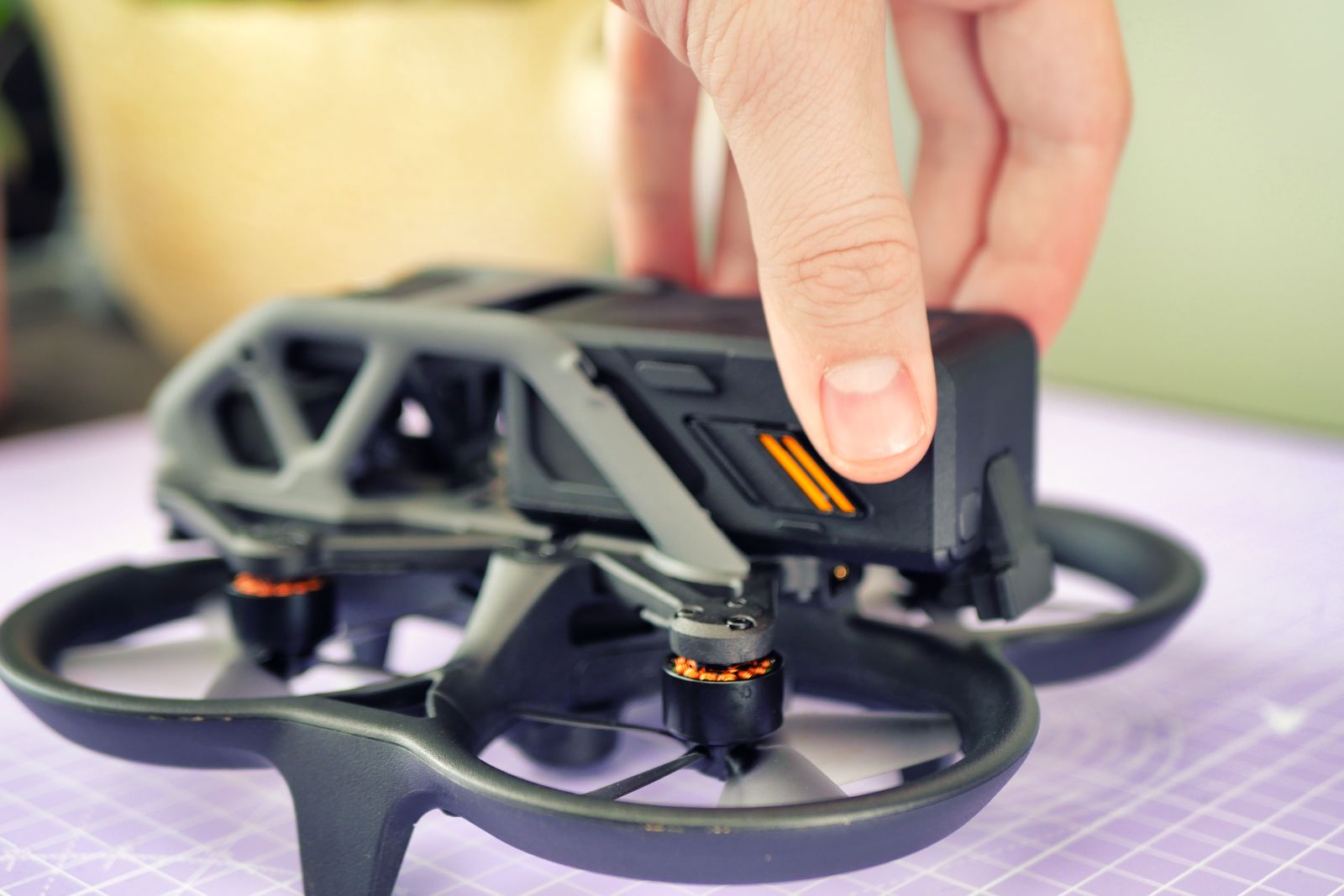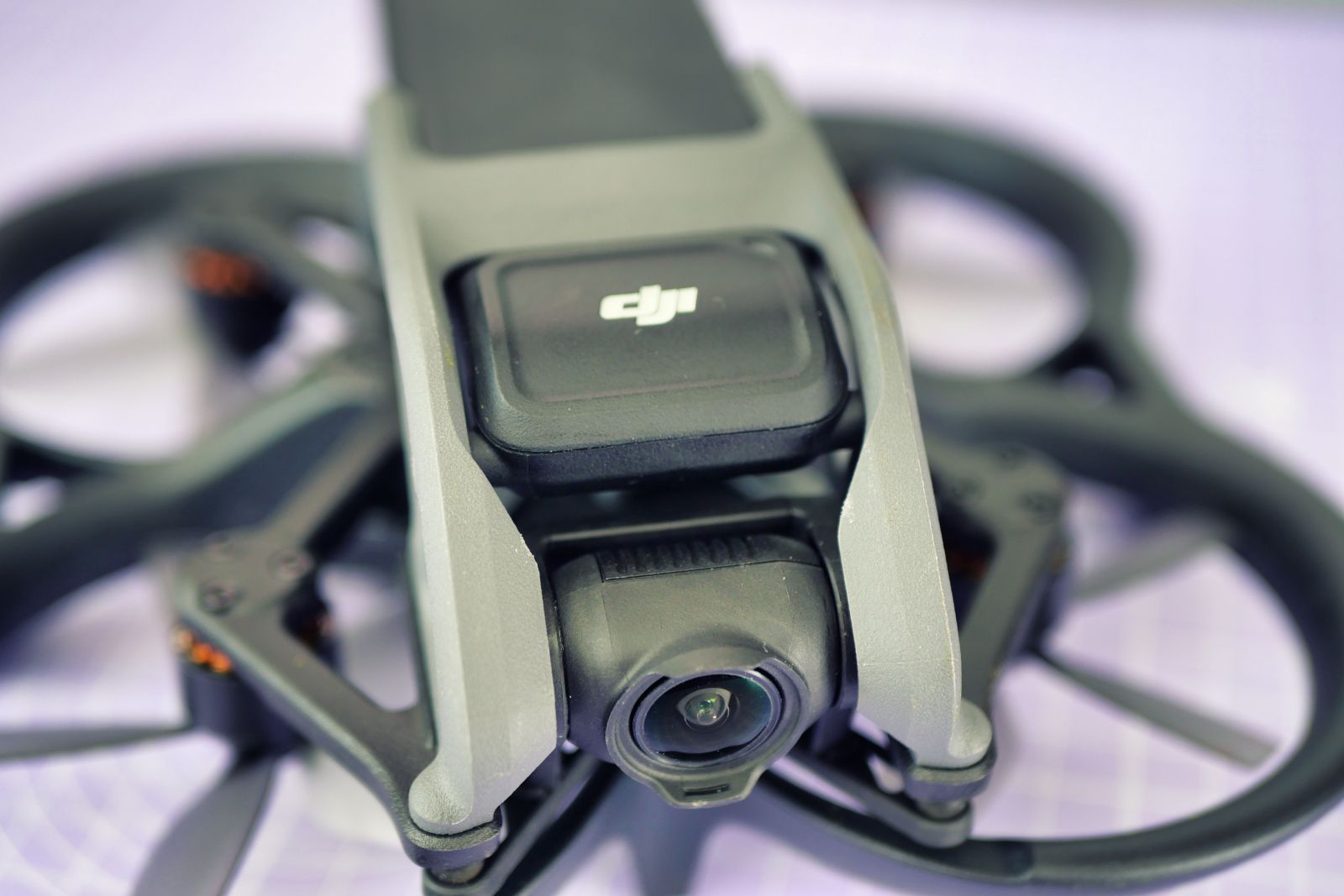To FPV drone hobbyists, the DJI Avata is a very familiar concept, but it's one that, until now, has yet to hit the mainstream. The FPV community calls this class of drone a cinewhoop, and it's designed to be able to fly closer to people and objects while reducing the risk of chopping things up with the propellers.
However, when it comes to traditional cinewhoops, the barrier to entry is extremely high. If you want any chance of getting the epic shots that you crave, you'll need to learn how to solder, use esoteric software and learn a whole lot about confusing radio links and peripherals. Then, you'll need to learn to fly the thing, which is a challenge in and of itself.
The DJI Avata is here to bring the cinewhoop experience to everyone, and it promises to be an all-in-one solution that's easy to set up, fly and film with. We've been putting it to the test.
Our quick take
If you want a compact nimble drone that can capture high-quality footage indoors and out, the DJI Avata might be the drone for you.
It's not a new concept, but it's one that has been out of reach for all but the most dedicated hobbyists until now. Both the relatively simple setup and flight features like altitude holding and automatic landing capabilities make this class of drones more accessible than ever before.
We're happy to see an easy upgrade path for existing DJI FPV owners, who are able to continue using their existing goggles and remotes with the new drone, too. At the same time, the DJI Goggles 2 offer enough to be a compelling upgrade for owners of the previous model.
The only real downside is that FPV-style flying is inherently risky, and while DJI is making some replacement parts available, more serious crashes will involve sending the drone back to DJI - which could prove costly and time-consuming. The convenience offered here could well be worth it, though.
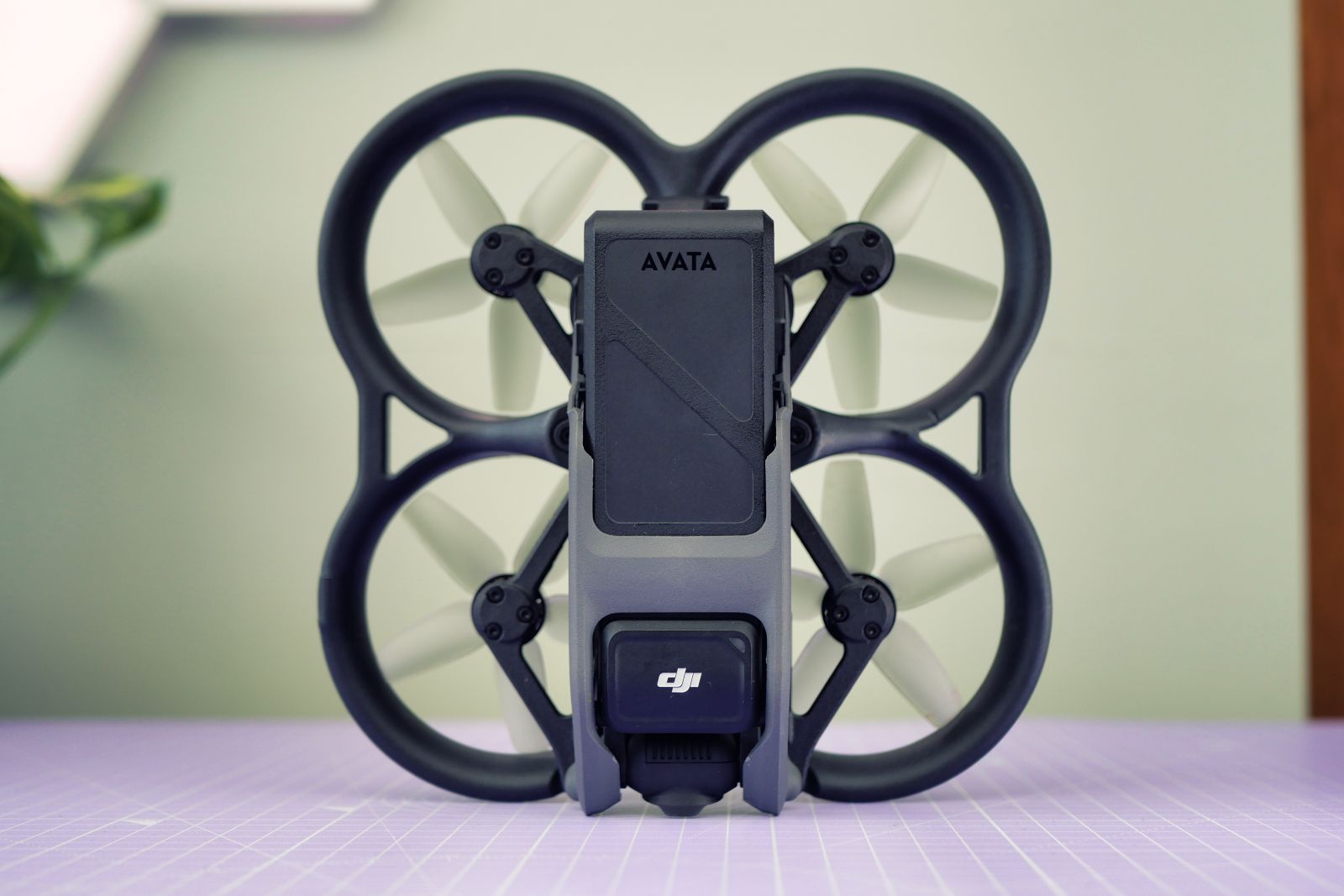
DJI Avata - 4.5 / 5
| FOR | AGAINST |
|---|---|
|
|
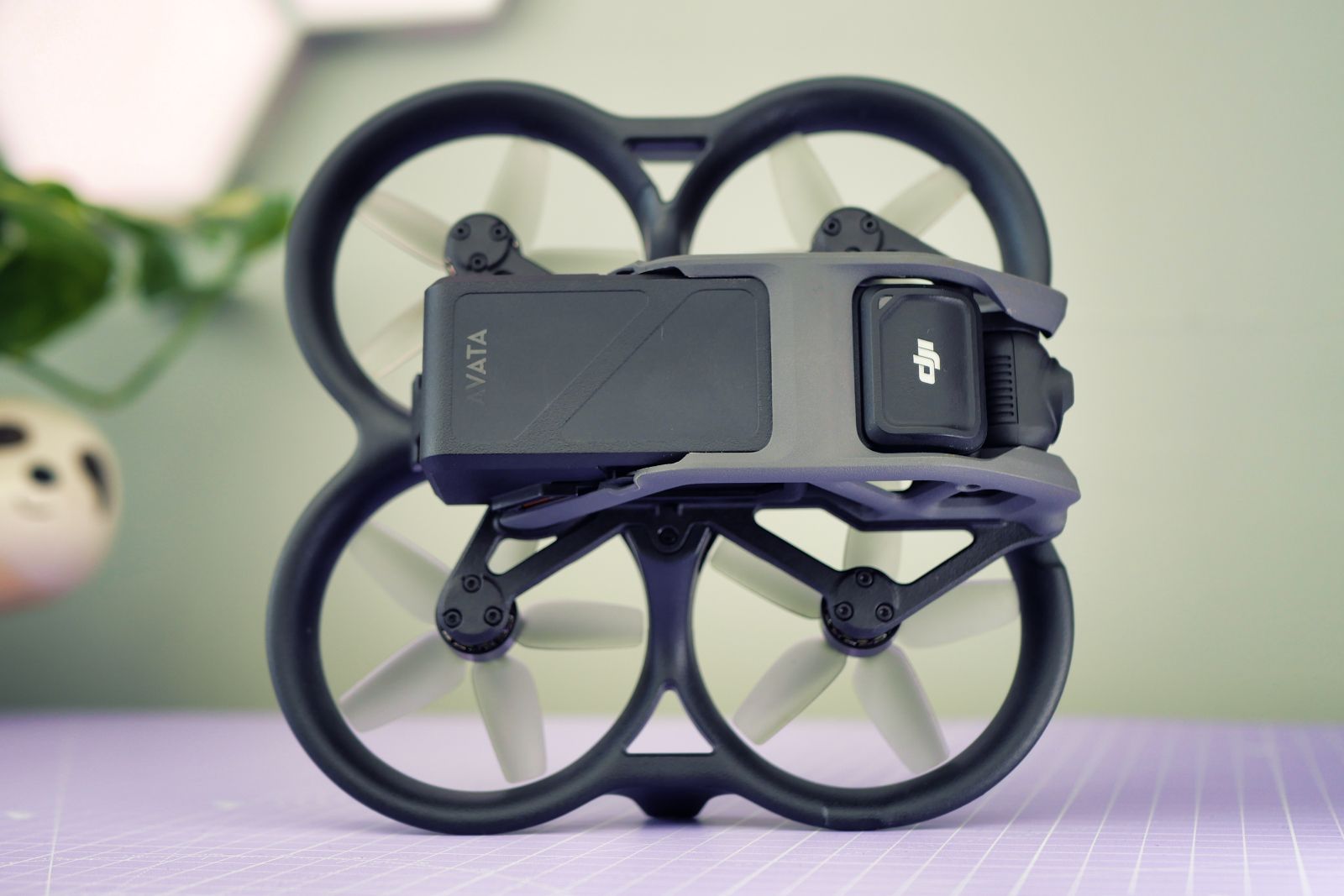
DJI Avata
If you want to take your flying to the next level, and to new locations, the DJI Avata could be the drone for you.
Design
- 180 x 180 x 80mm; 410g
- 20GB internal storage and microSD card support
The DJI Avata is relatively compact, but due to the propeller guards, it can't fold down to a smaller size like most of DJI's drones do. It feels dense and robust throughout, however, while most hobbyist cinewhoops have a carbon fibre frame at their core, the Avata is made almost entirely from plastic.
The propellers are just shy of 3-inches in diameter, which is about what you'd expect from a typical cinewhoop. There's a difference with this design, though, and that's the fact that the built-in camera is used for both recording and broadcasting to the goggles, just like DJI's FPV drone. On a hobbyist drone, you'd typically have a separate camera that broadcasts and an action camera strapped on top for recording purposes.
The camera is fixed onto a soft-mounted single-axis gimbal, which stabilises the pitch axis. The roll and yaw axes are fixed, and this gives the footage captured that signature FPV look. When well executed, it resembles the swooping motions of a bird in flight.
There's a plastic bung on one of the propeller guards that hides the microSD card slot and USB-C port. The USB connection allows the aircraft to be used as a card reader, while the SD card slot supports up to 256GB of storage. You'll want a speedy card to take full advantage of the 4K 60fps capabilities, but handily, there's also 20GB of internal storage, if you happen to forget your card.
The batteries use a proprietary connector on the end of a flexible tab. It works similarly to the batteries on DJI's larger FPV drone, but there's no cross-compatibility here. The battery slides into the frame and clicks into place. We found it a little difficult to remove, at first, but it appears to have loosened up a little with use.
As with the DJI Mini 3 Pro, there's no Fly More Combo for the Avata, instead the Fly More Kit is available as a separate purchase. The Avata can be purchased alone or bundled with either the new DJI Goggles 2 or the older DJI FPV Goggles V2. This flexibility is great for owners of the DJI FPV drone, as they will be able to use their current goggles and remote with the new drone, and can save some significant cash in the process.
DJI Goggles 2
- 167.40 x 103.90 x 81.31mm; 290g
- Image: 50Mbps 1080P/100fps
- 1800mAh battery - 2 hours runtime
Our test kit included the latest iteration of DJI FPV Goggles, and it's a big upgrade. These new goggles are so much smaller, lighter and more comfortable than previous generations. It's not just the physical form that's improved, though, new Micro OLED screens and adjustable diopters mean that the image is clearer than ever, whilst being more accommodating to glasses-wearers.
The goggles use the latest DJI O3+ transmission system, which provides a low latency, high-resolution video link to the aircraft. It's been bumped up to 1080p, whereas the previous goggles max out at 810p. However, the older FPV drone could transmit 120fps, while the Avata maxes out at 100fps.
The control scheme has been improved, too, with a touchpad on the side of the goggles that allows you to navigate through the menus. It took a little bit of getting used to, but once we did, we were flying through the menus, it's very intuitive.
We loved using the DJI Goggles 2, the video link was reliable, predictable and higher resolution than anything that we've experienced before. The downgrade to 100fps wasn't really noticeable, to us at least, but then the Avata is usually flown a bit slower than its speedy sibling.
We found the goggles much more comfortable than the previous generation and experienced little-to-no light leaks even when standing in direct sunlight. As always, this will vary depending on the shape of your face, though. The only thing we didn't like was the length of the battery cable, which didn't quite comfortably reach our pockets. However, this would easily be solved with an accessory.
The flying experience
- Max speed: 8m/s (Normal) 14m/s (Sport) 27m/s (Manual)
- Max range: 11.6km
- Max flight time: approx. 18 mins
We've had a lot of experience with custom-built cinewhoops, and so, we had some idea of what flight characteristics to expect from the Avata. For those who aren't so familiar, cinewhoops tend to be somewhat sluggish and less nimble than drones without prop-guards. They tend to be pretty loud and they don't like the wind, but they're stable at low speeds and great at navigating tight spaces.
All of these things proved true with the DJI Avata and flying it felt a lot like flying one of our custom cinewhoops. The key difference is that in Normal or Sport mode the Avata can hold its altitude automatically and stop on the spot, whereas a custom cinewhoop requires constant throttle input or it will just drop out of the sky.
Another big difference, for us, was that we were flying with the DJI Motion Controller. We've never used anything like this before and were a little sceptical about its usefulness. However, it's really easy to pick up, and we can imagine that, for new pilots, the learning curve would be far less steep than with a traditional RC remote.
There were a few things that took a moment to get used to, like turning with your wrist rather than your arm, and the fact that you need to use the accelerator to decrease altitude. But once we got our head around it, it felt surprisingly natural. Before long, we were weaving in and out of trees just like we would with a traditional controller.
FPV flight is thrilling, even when you're not in full manual mode, and close calls and elevated heart rates are part of the package. With no obstacle avoidance (except for the landing assistance) you'll often find yourself in hairy situations. Thankfully, the Avata can stop on a dime with a press of the brake button, but you'll still need it to have some durability.
We had a pretty speedy collision with a tree branch, and luckily, the only damage was some cosmetic dinks on the propeller guards. It's hard to say definitively how durable the drone is, but early indications are quite positive.
Finally, there's the battery life. On a day with some mild winds, flying in sport mode, we were getting around 8-10 minutes. This might not sound great if you're used to drones like the Mavic 3, but compared to a regular cinewhoop, it's luxurious. They'll net you about 3-5 minutes in similar conditions.
Image quality
- 1/1.7in CMOS sensor
- f/2.8 aperture, 12.7mm equivalent
- Up to 4K 60fps recording
- RockSteady and HorizonSteady EIS
Recordings from the Avata are sharp and lifelike with pleasing natural colours. The fidelity isn't quite on par with the top action cameras like the GoPro Hero 10 or DJI's own Action 2, but it's not too far behind. For online video and social media use, most would find the video quality to be more than good enough.
Stabilisation is impressive, too. Rocksteady mode smoothes off the hard edges of your flight creating a floaty, smooth look that we really like. If you want an even more stable video, you can use Horizonsteady, which keeps the horizon locked and takes away some of that FPV look. In our opinion, though, we think that look is better achieved with one of DJI's many non-FPV drones.
If you want a higher degree of stabilisation but don't want to lock the horizon, then you can record with the stabilisation turned off and apply it in post. The Avata records gyroscope data which allows it to be used with third-party stabilisation software like GyroFlow. We were pleased to see this included, as DJI often likes to keep things in-house and supporting an open-source project like this is a surprising, but very positive, move.
One thing that we weren't able to test, is whether the Avata will be capable of carrying an external camera, but we imagine it won't be long before someone attempts it. Many people choose to mount a GoPro on top of the DJI FPV for the increased image fidelity, and we could imagine tinkerers doing the same with this craft.

DJI Avata
If you want to take your flying to the next level, and to new locations, the DJI Avata could be the drone for you.
To recap
At its core, the DJI Avata is a specialised filmmaking tool that excels when it comes to flying in tight spaces and around people. It won't be the right drone for everyone, but for those who need it, it's a bit of a gamechanger. For casual users, it's a thrilling, albeit pricey, toy, that's far less intimidating than the full-fat DJI FPV.

